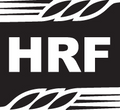Mature cattle belong to a class of mammals known as ruminants – even-toed cud-chewers with four stomachs. In the adult cow the rumen is the first and largest stomach, comprising approximately 80% of the digestive tract.
The feed that passes into the rumen ferments, assisted by billions of bacteria, fungi and protozoa (microorganisms) in conjunction with periodic cud-chewing. As the feed is broken down the cow absorbs some through the wall of the rumen while some (along with a portion of the microorganisms) moves into the other stomachs to be further digested.
Newly born calves are pre-ruminants. They have the same four stomachs as an adult bovine but the rumen is significantly smaller. In the calf, the largest part of the digestive tract is the abomasum (fourth stomach), making up nearly 70% of the digestive tract. In the young calf the act of sucking causes a fold of muscle to develop in the wall of the rumen. This is called the “reticular groove” and as the calf sucks it delivers milk directly to the abomasum (fourth stomach) where it is digested.
As the calf grows and solid feed is incorporated into the diet the rumen enlarges as the abomasum shrinks. This is a critical stage in the animal’s development. For the rumen to develop properly it needs to be stimulated by the ingestion and digestion of solid feed.
Early introduction of solid feed leads to optimum rumen development and weight gain. It is a gradual process that prepares the animal for a pasture-based diet and is a key element in effective calf-rearing.
Calf Pro Plus is a highly palatable protein calf feed designed for early rumen development, early weaning and increased growth rates. Contains Bovatec to prevent coccidiosis (scours).
